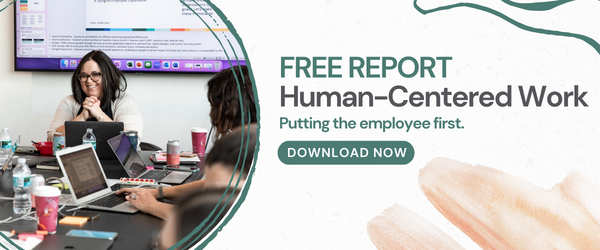In today's fast-paced and demanding work environment, the global workforce is facing an unprecedented burnout epidemic. With employees stretched to their limits, the need for a proactive approach to improve performance, provide effective feedback, and handle difficult conversations has never been more critical.
According to recent statistics, 87% of employees believe they are operating at full capacity, and a staggering 75% experience burnout at some point in their careers. During the pandemic, this issue was exacerbated, with around 40% of workers reporting burnout, largely due to increased working hours. Furthermore, the burnout epidemic appears to affect women more significantly, with 43% of female leaders experiencing burnout compared to 31% of their male counterparts.
In this blog, we will explore the challenges presented by the burnout epidemic and provide insights on how to improve employee performance, offer feedback, and engage in difficult conversations during these trying times.
Burnout is more than just being tired; it's a state of physical, emotional, and mental exhaustion caused by prolonged stress. The burnout epidemic has been exacerbated by various factors, including increased workload, remote work challenges, and economic uncertainties. Recognizing the signs of burnout is crucial in addressing the issue.
Tips to Improve Employee Performance During Burnout
Improving employee performance in a burnout-affected workplace requires a delicate balance. Here are some strategies to consider:
- Flexibility: Acknowledge that employees are not operating at their best, and offer flexibility in work schedules, deadlines, and workload distribution. This will help reduce stress and improve productivity.
- Goal Setting: Collaboratively set realistic and achievable goals with employees. This can help provide a sense of accomplishment, motivation, and direction in these trying times.
- Skill Development: Invest in training and development opportunities to enhance skills and knowledge, ultimately boosting employee confidence and performance.
How to Deliver Feedback in a Mindful Way
Feedback is an essential tool for employee growth, but delivering it during a burnout epidemic requires a mindful approach:
- Timely and Constructive: Offer feedback in a timely and constructive manner. Make sure your feedback is specific, focusing on actions and behaviors, rather than personal attributes.
- Recognition: Acknowledge the effort employees are putting in and offer praise for their hard work, even for small achievements. Positive reinforcement can be a powerful motivator.
- Two-way Communication: Encourage open and honest two-way communication. Allow employees to express their concerns and provide suggestions for improvement.
- Set a cadence: Ensure you are meeting with your employees on a regular cadence to ensure there is plenty of opportunity to give feedback and assistance.
How to Have Difficult Conversations as a Leader:
Difficult conversations are a part of leadership, and during a burnout epidemic, they can be even more challenging. Here are some tips:
- Empathy: Approach these conversations with empathy. Understand that employees may be emotionally drained and be prepared to offer support.
- Active Listening: Listen actively to the concerns and frustrations of your team. This will help build trust and create a safe space for dialogue.
- Solutions-Oriented: Focus on finding solutions to the issues raised during these conversations, rather than placing blame or dwelling on the negatives.
- Reflect and Learn: Take time to reflect on difficult conversations and think about what you could do differently in the future.
The Burnout Epidemic is not to be Ignored
The burnout epidemic is a reality that organizations and leaders cannot afford to ignore. As an estimated 75% of employees experience burnout at some point, addressing this issue is paramount. By implementing the strategies discussed above, you can improve employee performance, offer feedback effectively, and engage in difficult conversations with a more compassionate and understanding approach. In doing so, you not only support your employees during these challenging times but also foster a healthier and more productive work environment for everyone.






